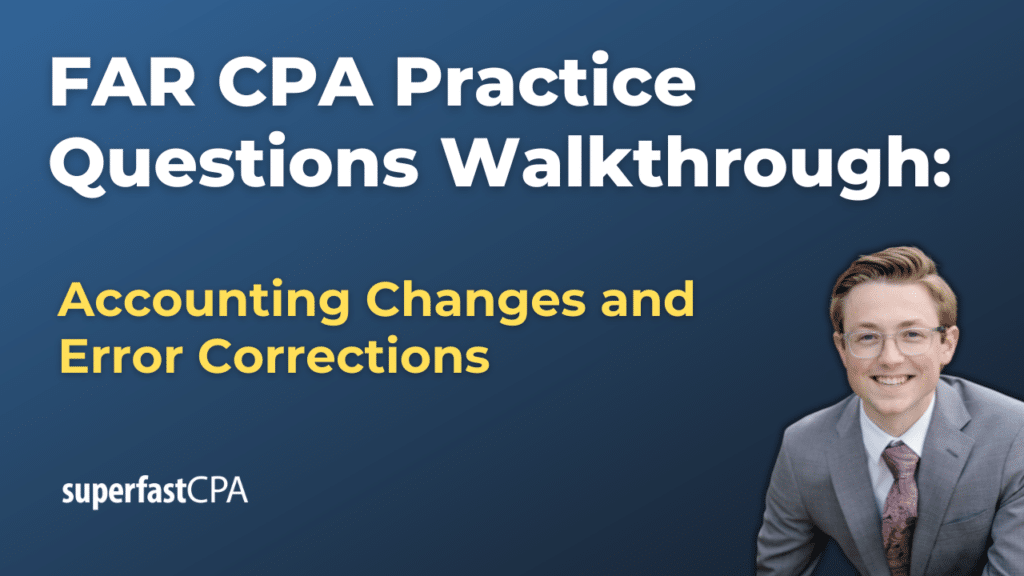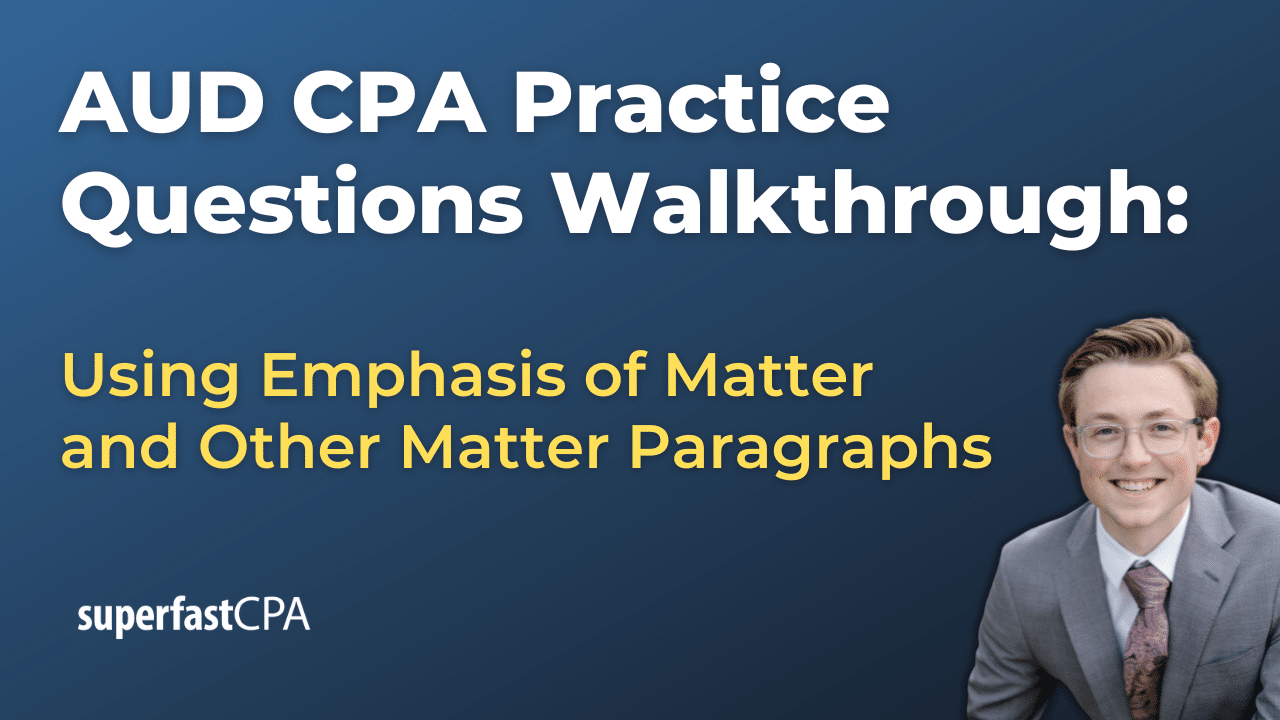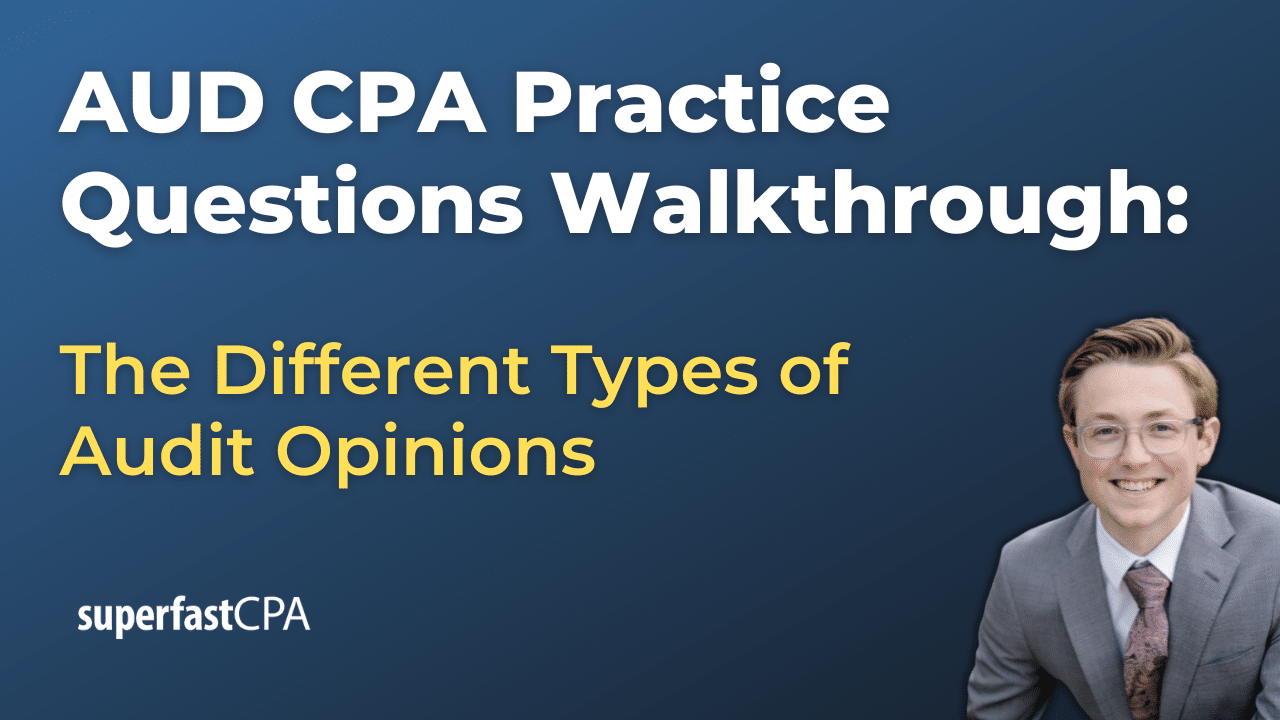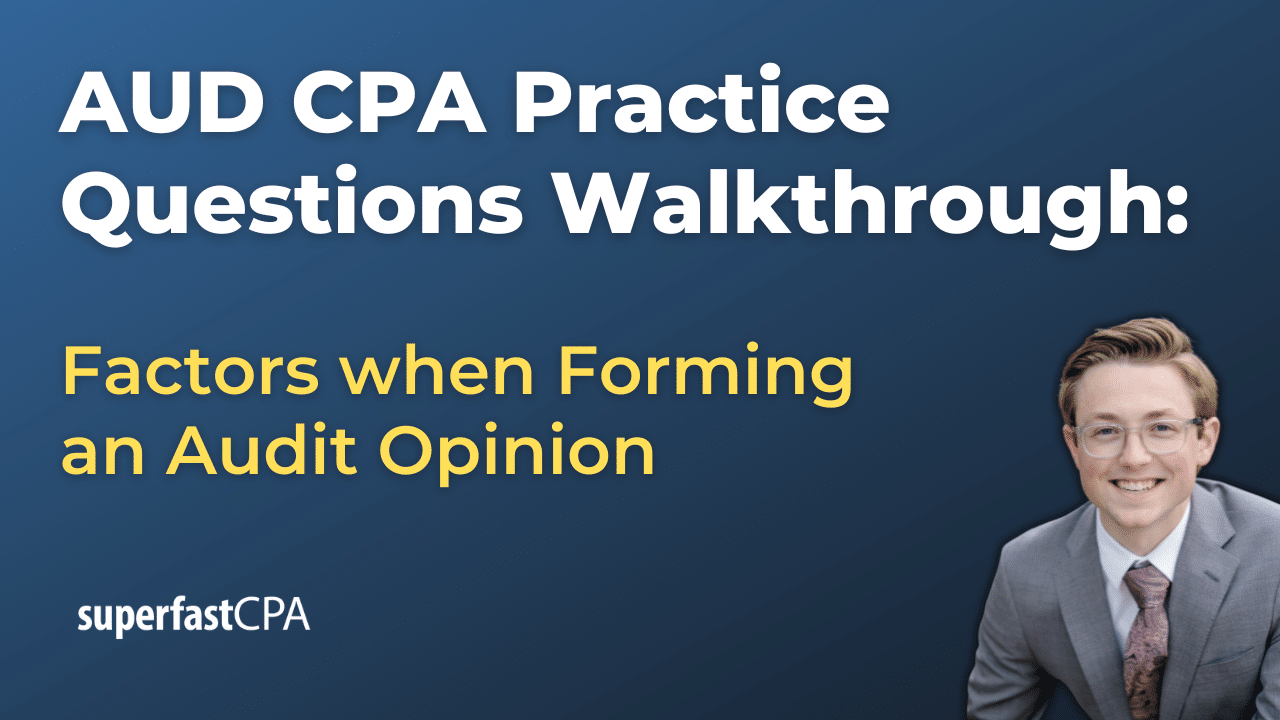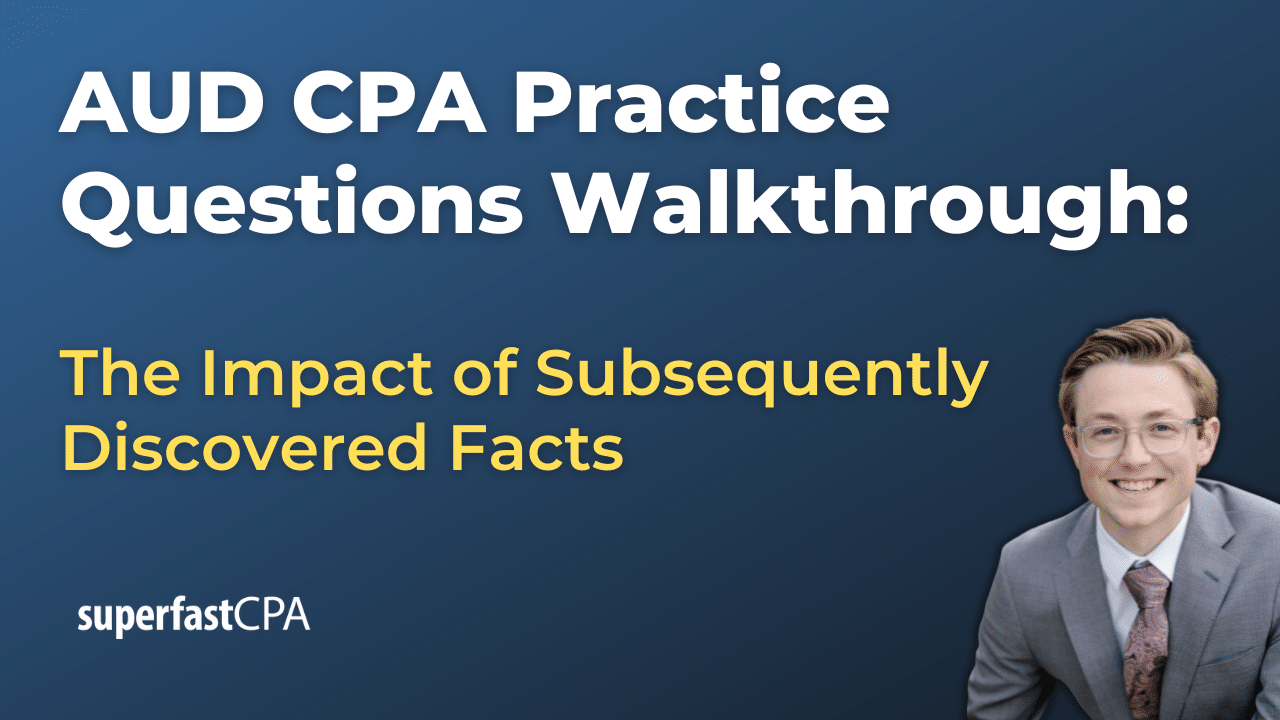In this video, we walk through 5 FAR practice questions covering accounting changes and error corrections. These questions are from FAR content area 3 on the AICPA CPA exam blueprints: Select Transactions.
The best way to use this video is to pause each time we get to a new question in the video, and then make your own attempt at the question before watching us go through it.
Also be sure to watch one of our free webinars on the 6 “key ingredients” to an extremely effective & efficient CPA study process here…
Calculating Accounting Changes and Error Corrections
When a company identifies an accounting change or discovers an error, it needs to adjust its financial statements accordingly. Depending on the nature of the adjustment, it may require either prospective (going forward) or retrospective (restating prior periods) application. This guide will walk you through the steps to determine the correct treatment and provide examples for clarity.
Changes in Accounting Principle
Definition:
A change in accounting principle occurs when a company adopts a new accounting method or changes an existing one. Common examples include switching from the weighted-average method to FIFO for inventory, or from completed-contract to percentage-of-completion for long-term construction contracts.
Treatment:
Changes in accounting principles are generally applied retrospectively. This means that prior period financial statements must be restated to reflect the new method as if it had always been used. The cumulative effect of the change on prior years is adjusted in the beginning retained earnings of the earliest period presented.
Example:
Suppose a company has been using the weighted-average method to account for its inventory. On January 1, Year 5, it decides to switch to the FIFO method. As of December 31, Year 4, the company’s inventory under the weighted-average method was valued at $340,000, but under FIFO, it would have been $410,000. The tax rate is 30%.
- Step 1: Determine the difference in inventory values under the two methods.
Difference in Inventory = FIFO Inventory – Weighted-Average Inventory
Difference in Inventory = $410,000 – $340,000 = $70,000 - Step 2: Calculate the after-tax impact on retained earnings.
After-Tax Adjustment = Difference in Inventory * (1 – Tax Rate)
After-Tax Adjustment = $70,000 * 0.70 = $49,000 - Adjustment: The company would increase retained earnings at the beginning of Year 5 by $49,000 to reflect the change in accounting principle.
Key Point:
Switching to LIFO (Last-In, First-Out) is an exception, as it is often impracticable to apply retrospectively due to the difficulty in reconstructing historical inventory layers. If retrospective application is impractical, the change is applied prospectively instead.
Changes in Accounting Estimate
Definition:
A change in accounting estimate involves revising an estimate based on new information or better insight. This might include changes to the useful life of an asset, the expected salvage value, or estimates for bad debts.
Treatment:
Changes in accounting estimates are applied prospectively. This means that the new estimate is applied from the current period onward, without restating prior financial statements. This approach reflects the fact that estimates are inherently uncertain and may change as conditions evolve.
Example:
A company purchases equipment for $100,000 with an estimated useful life of 10 years and no salvage value. After 4 years of use, the company determines that the remaining useful life should be 8 more years, based on new information. The company uses straight-line depreciation.
- Original Annual Depreciation:
$100,000 / 10 = $10,000 per year - Accumulated Depreciation for the First 4 Years:
$10,000 * 4 = $40,000 - Carrying Amount at the Beginning of Year 5:
$100,000 – $40,000 = $60,000 - New Annual Depreciation (based on 8 remaining years):
$60,000 / 8 = $7,500 - Adjustment: No retrospective adjustment is made. Starting in Year 5, the annual depreciation expense is updated to $7,500 and applied prospectively.
Key Point:
If it is impossible to determine whether an adjustment is a change in estimate or a change in principle, it should be treated as a change in estimate, meaning it will be applied prospectively.
Error Corrections
Definition:
An error correction involves fixing mistakes in prior period financial statements due to incorrect application of accounting principles, mathematical errors, or oversight. Examples include expensing an item that should have been capitalized or failing to accrue a liability.
Treatment:
Error corrections are applied retrospectively. This means restating prior period financial statements to reflect the corrected information. Any cumulative effect on prior years is adjusted in the beginning retained earnings of the earliest period presented.
Example:
During Year 3, a company discovers that it incorrectly expensed $50,000 in Year 1 that should have been recorded as equipment with a useful life of 5 years. The company’s tax rate is 25%.
- Step 1: Determine the correct depreciation for each year.
- Correct Annual Depreciation = $50,000 / 5 = $10,000 per year
- Step 2: Calculate the cumulative effect on retained earnings for Year 3, adjusting for the tax impact.
- Depreciation that should have been recorded for Years 1 and 2 = $10,000 * 2 = $20,000
- Net Impact of Error = $50,000 (original expense) – $20,000 = $30,000 (before tax)
- After-Tax Impact on Retained Earnings = $30,000 * (1 – 0.25) = $22,500
- Adjustment: The company would increase retained earnings at the beginning of Year 3 by $22,500 and recognize accumulated depreciation of $20,000 on the equipment.
Summary of Prospective vs. Retrospective Applications
| Type of Adjustment | Applied Prospectively or Retrospectively | Example |
|---|---|---|
| Change in Accounting Estimate | Prospectively | Revising useful life of an asset |
| Change in Accounting Principle | Retrospectively (unless impractical) | Switching from weighted-average to FIFO |
| Error Correction | Retrospectively | Correcting a previously expensed asset |

